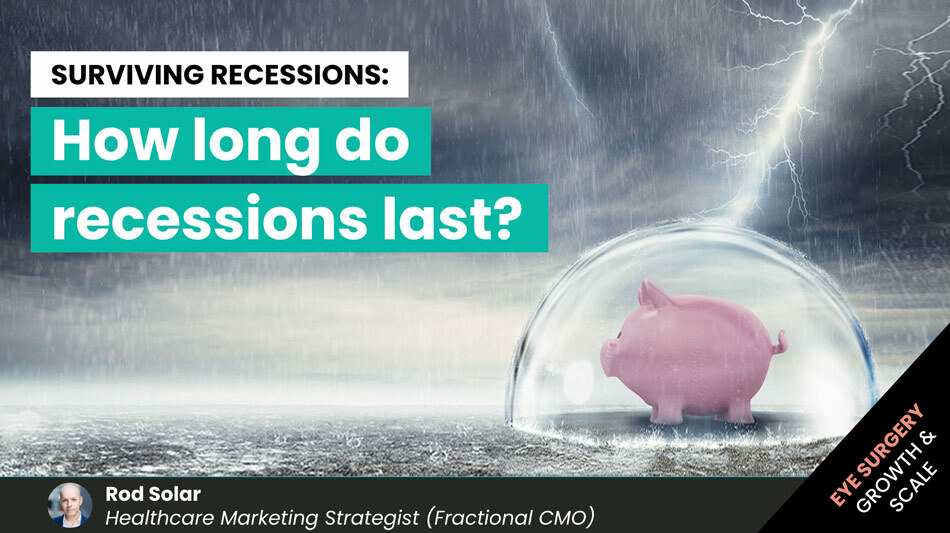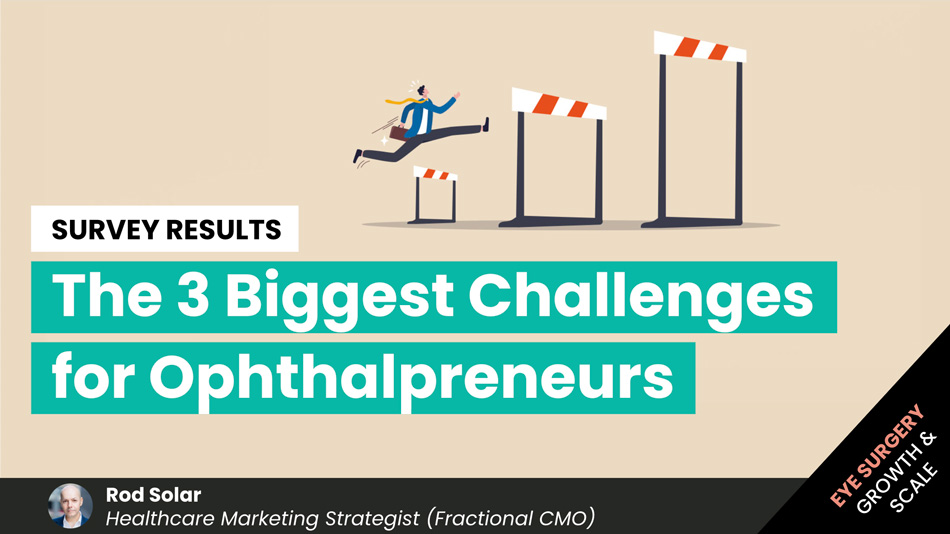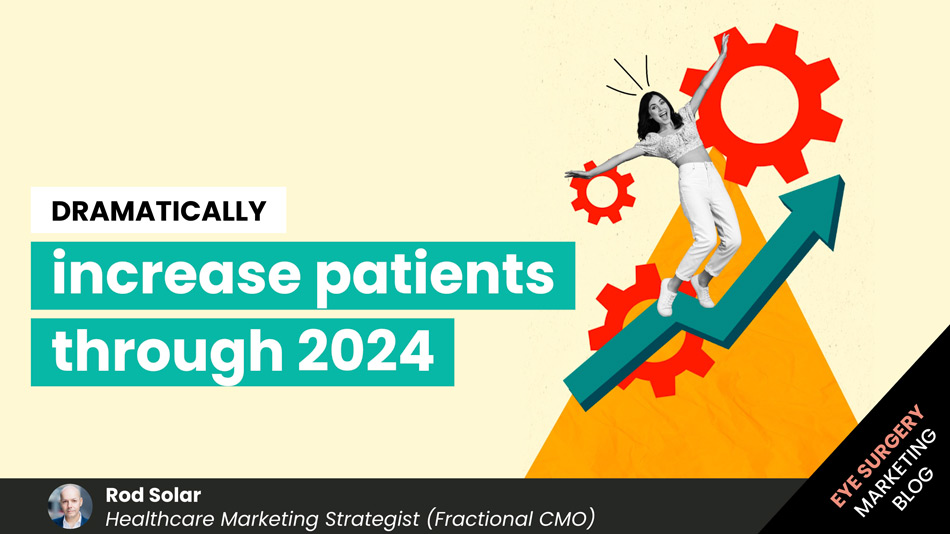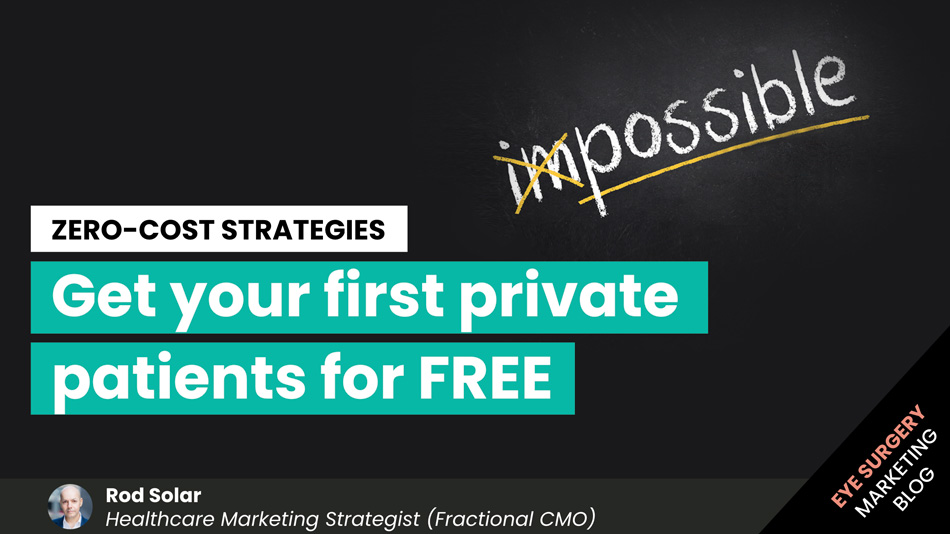Rod Solar’s advice on practice building featured in Eurotimes July/August 2011:
Is there a Market for my Services? A little research about demographics, patients and competitors can help grow your practice
Rod Solar’s advice on building and growing a medical practice is featured in a Eurotimes article in July/August 2011, which explains how important research about demographics, patients and competitors can be to grow your practice. The full article by Howard Larkin is below:
With an estimated 1.4 billion patients worldwide due to develop presbyopia by 2020, ophthalmic surgeons like Nader Robin MD are targeting their practices to that ever-growing patient population. Dr Robin has even chosen the name of “Presbyview” for his practice in Grenoble, France.
Dr Robin’s practice website touts the broad range of presbyopia options he offers, including LASIK, PRK, InTRACoR, the KAMRA pinhole intracorneal inlay, and his own hyperopic presbyLASIK that uses a hyperprolate cornea to extend depth of focus. Dr Robin also specially trains his staff to do complex workups to gauge patients’ refractive needs and determine the best solution before surgery. They also provide additional support as patients adjust after surgery.
Dr Robin has had good clinical results and high patient satisfaction with a variety of approaches, but he also concedes that his clinic faces special challenges with patients who haven’t needed glasses before: “Pure emmetropes with high expectations remain the most difficult cases to manage.”
Of course, not every surgeon has the desire, the resources, or the business interests to target an elective market in this way. The lasers and implants for refractive surgery are expensive, and the marketing and financing eadaches of running a private practice focusing on refractive procedures may not appeal to many surgeons – particularly those more interested in treating disease processes. Plus, the private market can be brutally competitive, with internationally run refractive surgery clinics depressing procedure prices even as the cost of new technology inexorably rises.
That said, the implants, equipment, and facilities for cataract surgery are also costly, too. They also may become much more so if femtosecond lasers become the standard of care. As major manufactures look for revenue opportunities as some major drugs go off patent, even glaucoma and retinal surgery are moving toward more devices and less manual surgery, pushing initial treatment costs higher. Whether these costs are borne by public or private organisations, the higher they go the more competition is likely among surgeons to gain access to the resources needed to practice.
What kind of practice do you want?
So how do you know if there is enough of a market for you to support your practice using the skills and providing the services you worked so long to master? The answer depends on many factors, practice development experts say.
Among them are how many potential patients there are in your area, what kind of competition you face, how you can distinguish your practice from competitors – and what, exactly, it is you want out of your practice.
As a human being and surgeon, you may well be motivated more by personal and professional satisfaction than business success, notes Rod Solar, client services director for LiveseySolar Practice Builders, London, UK and leader of the Marketing Your Practice Workshop which will take place at the XXIX Congress of the ESCRS this September in Vienna. “If you want a reasonably comfortable life practising wherever it is that you live, fine. But if this is your only goal, you need to be conscious that where you live will have a tremendous influence on how successful you are from a business perspective.”
“If I were to open a Starbucks would I open it right down the road from another one? No, I would open it in a place where I am likely to sell a lot of coffee.” – Rod Solar
Many doctors embrace this outlook, and generally are reluctant to uproot themselves and their families unless their practice financial situation is untenable, Mr Solar says. In fact, many studies show that most doctors eventually settle close to where they trained, possibly because they have developed clinical support and referral networks there.
However, if your goal is return on investment, it’s wise to look at your practice more as a business than a personal vocation, Mr Solar says. “If I were to open a Starbucks would I open it right down the road from another one? No, I would open it in a place where I am likely to sell a lot of coffee.”
While the differences between selling lattes and surgeries are obvious, to some extent the same logic applies. “In your town you can count how many operations are needed. It makes more sense to find a place that is under-served rather than one where there is lots of competition,” Mr Solar says.
Some countries may offer ophthalmic surgeons and other healthcare professionals financial incentives to move away from urban areas to less-served regions, says Kristine Morrill, a partner in medeuronet, a consulting and market development company based in Strasbourg, France, and London, UK. However, a larger concentration of surgeons in urban areas does not necessarily indicate a shortage of patients. For example, in Paris, clinics have developed wide-ranging referral networks in the city suburbs, she says. “There are more patients than ophthalmologists, so you probably have to have a good market position to do well,” Ms Morrill says.
“In your town you can count how many operations are needed. It makes more sense to find a place that is under-served rather than one where there is lots of competition.” – Rod Solar
However, in Germany much of the competition for ophthalmic surgery takes place at the level of residents competing for surgical training, she notes. Likewise, the restricted number of ophthalmic specialists in the UK almost guarantees a comfortable living, she adds.
But even in countries with a limited supply of ophthalmic surgeons, relocation isn’t the only way to build business, say Keith Willey BSc, MBA, professor at London Business School, and conductor of the annual ESCRS/EuroTimes Practice Development Masterclass, which will take place for the third time at the XXIX Congress of the ESCRS this September in Vienna. “The trick is, ‘How do you position yourself in your market?’ and ‘How is everyone else positioned?’” Prof Willey observes.
“One big question is the range of procedures you are offering. If you want to do LASIK, you can nail down the process and become very fast at it,” he says. “You can make a lot of money, but it is geared to the economy. Or you can say ‘I am not tempted by the quick buck, but I will do the more difficult but less remunerative procedures, but I know I will always have business and I will be making a difference in people’s lives. I think that is at the heart of the business decisions surgeons make. We have seen some who went into LASIK, and with the global economic crisis, have had to readjust.”
It may well be that if you offer patients competent and pleasant service, and take care to communicate promptly with referring doctors – and make sure you send the patient back – you may well carve yourself a market niche that is both lucrative and long-lasting. Understanding where your patients and referrals come from, and what they want, is the key to success no matter what services you offer. And it’s not terribly difficult or expensive to do.
How big is your market?
Because the incidence of eye conditions is relatively well known and most countries track the population size, age, ethnicity and other demographics at least every 10 years, much of the basic market research for publicly paid medical services already exists, Mr Solar notices. He suggests getting the latest demographic information available, and also to following real estate trends. If new houses are going up in the district, chances are the need for services is rising as well. These locations may be good opportunities to open a practice or a part-time office.
In most cases, patients won’t travel more than 100km or so to see a doctor. So usually your market area may cover a town or small city, or part of a large city. one way to find out for sure is to look at your existing patient base to see where they live, and ask them how they heard about your practice, Ms Morrill says, in order to get an idea of your catchment area. Then look on the Internet, in phone books, and in hospitals and other facilities to see how many surgeons offer similar services in the area. If there are more than enough to serve the population, you may be better off elsewhere or focusing on a different service in order to differentiate yourself.
“What we are looking for is your competitive advantage,” said Mr Solar. It may be special training or expertise, such as subspecialty training in retinal surgery or glaucoma, which is hard to reproduce. Or it may be convenience – if everyone else is working bankers’ hours, seeing patients on nights and weekends may be enough to set you apart.
“What we are looking for is your competitive advantage.” – Rod Solar
And don’t forget other physicians, Prof Willey warns. He suggests surveying GPs on where they send their eye patients, and what they like and don’t like about the experience. Also, find out where the local operating facilities are and see who is booking patients. “That will tell you a lot about who does what and how things are really getting done.”
Going private
When it comes to refractive surgery, good market data is harder to come by, Mr Solar says. And because a substantial investment in equipment is usually involved, the stakes are much higher. Here again, research can help you position yourself for success even in a very competitive market.
As with publicly funded services, the process starts with demographics. But income and how well LASIK and other procedures are accepted in the community are just as important as medical need. One way to find out is to ask industry vendors. They often have a good idea of volume in your target area, Mr Solar says. You can even call your competitors and ask how many cases they do, though this might be considered sneaky by some. However, salesmen may tell you what you want to hear rather than what you need to know, Mr Solar warns. “If they say something that is favourable, as a rule of thumb cut it by 20 per cent. If they tell you something negative, increase it by 20 per cent.This helps you get to the middle.”
National penetration numbers may also help, Mr Solar adds. In the UK, about 0.3 per cent of people who can benefit from LASIK have it done (about 100,000 people) in any given year. Penetration in the UK pales in comparison to the three per cent figure found in the US. You can predict your annual volume by estimating the percentage of people in the eligible population who will likely have the procedure in any given year. Of course, you’ll need to carve your market share from that total number, unless you’re the only provider for 100 km.
“However, salesmen may tell you what you want to hear rather than what you need to know, Mr Solar warns.”
“There is also a considerable amount of information that can be derived from Google Insights (https://www.google.com/insights). For example, you can conduct a simple search for ‘laser eye surgery’ and identify web search (to evaluate trends) and regional interest in the procedure. It’s horribly unscientific, but if you survey a lot of different numbers you can get a pretty good idea of the volume or interest in the market.”
Just as important is to see where your competitors are in the market, Mr Solar says. In the abstract, value to the customer equals the benefit divided by the price. To find an opening in the market, he suggests mapping competing practices on price against some aspect that distinguishes your practice. It could be customer service, convenience, perceived quality, your reputation, brand equity, or scope of services. In the example shown (Figure 1), practice C4 finds that by providing personalised service, it can justify a higher price than the international chains in the market, C7 and C8, while still positioning itself as an attractive alternative to the highest priced practice, C6. Mr Solar recommends going through this exercise periodically to ensure your practice remains responsive to market needs.
Ms Morrill recommends going through a SWoT analysis process – identify your practice’s Strengths and Weaknesses, which are internal, and market opportunities and Threats, which are external. “It’s a good way to find your comfort zone. It is textbook business planning, but it can be really useful.”
Prof Willey agrees. He suggests writing down in detail where you want your practice to be and how you are going to get there. “People struggle with the question, but it forces them to figure out what they are going to do and work back from there.”
But the most important question may be do you really want to go private, Prof Willey says. It can be a tough choice. “A lot of doctors we see in the workshops have one foot in the public system and one foot in the private system. They see benefits and drawbacks to both. If you are on staff at a hospital you have access to operating space and patient flow is automatic. But if you are private, you are outside the mainstream and you have to think of ways for the patient to find you, and for doctors to refer to you instead of someone else. It requires a different set of skills and not everyone really wants it.”
Related Posts
Meet our Founders

Rod Solar
Founder & Scalable Business Advisor
Rod co-founded LiveseySolar and acts as a Fractional CMO and Scalable Business Advisor for our customers. He’s on a mission to help transform the lives of 10,000 people with vision correction surgery by 2024. To achieve that, he inspires his customers to make confident decisions that will help 50,000 people take the first step towards vision correction.
LiveseySolar completely transformed the way we were approaching this… We’ve gone from having just the dream of having a practice to having a practice up and running with people making inquiries and booking for procedures… It’s extremely pleasing. We feel lucky we connected with LiveseySolar.
— Dr Matthew Russell, MBChB, FRANZCO, specialist ophthalmic surgeon and founder of VSON and OKKO

Laura Livesey
Founder & CEO
Laura Livesey is the co-founder & CEO of LiveseySolar. She has developed powerful refractive surgery marketing systems that increase patient volumes and profits for doctors, clinics, and hospitals, since 1997.
Rod and Laura know as much about marketing surgery to patients as I know about performing it. They are an expert in the field of laser eye surgery marketing. They know this industry inside out. I believe that they could help many companies in a variety of areas including marketing materials, sales training and marketing support for doctors.
— Prof. Dan Reinstein, MD MA FRSC DABO, founder of the London Vision Clinic, UK











